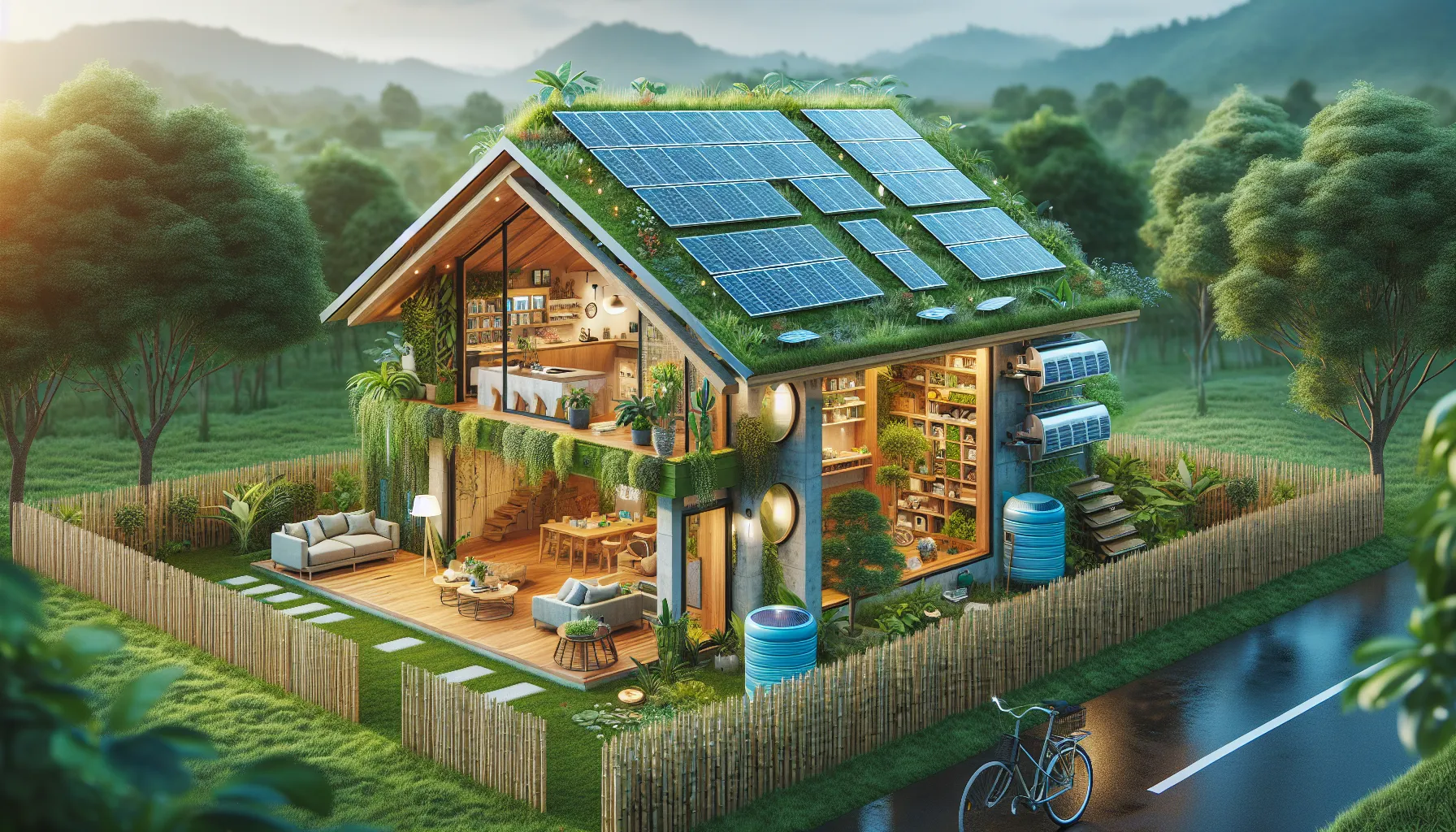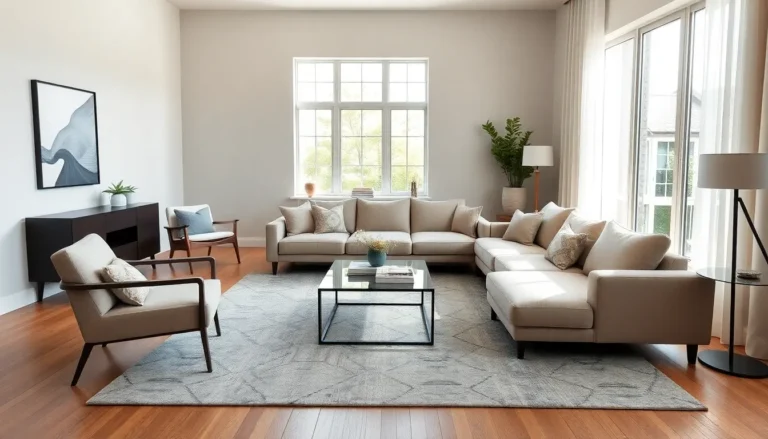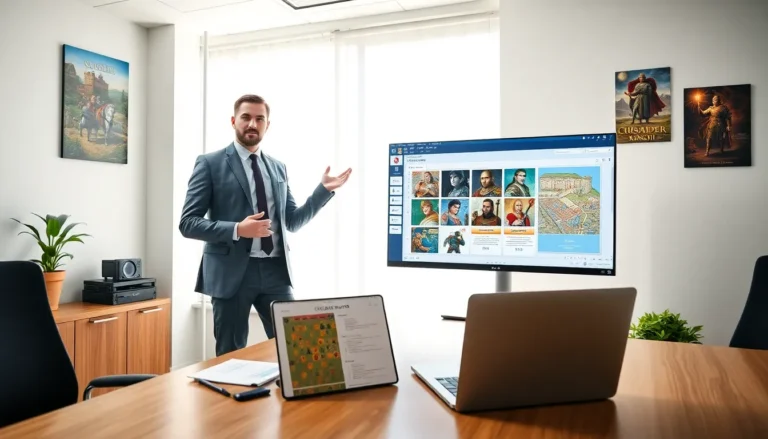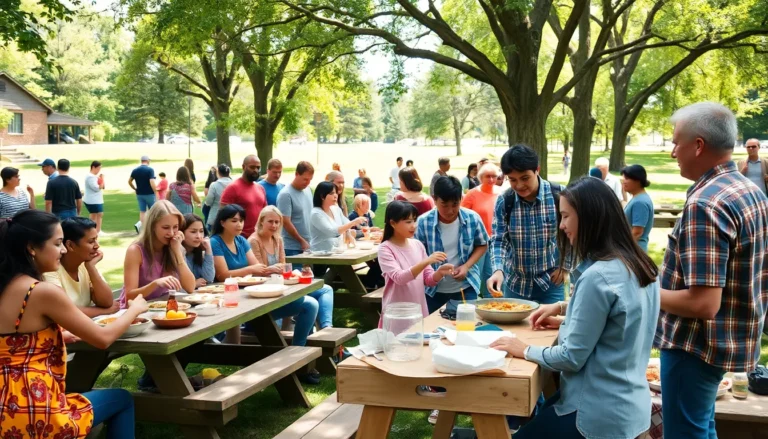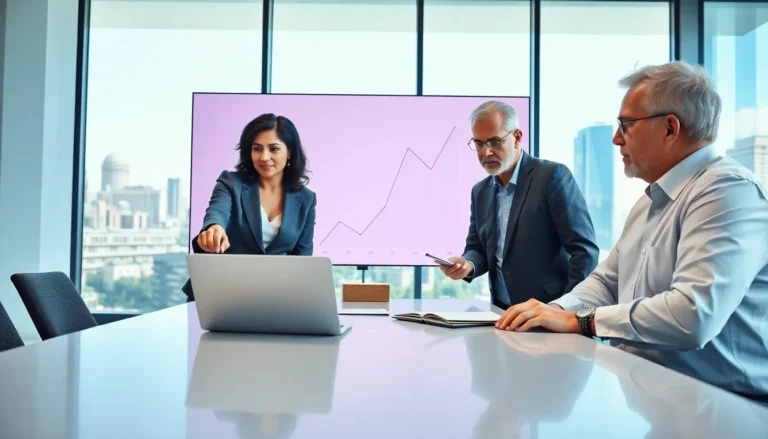Table of Contents
ToggleIn a world where the planet seems to be giving us a not-so-gentle nudge to rethink our ways, sustainable living builders are stepping up like eco-friendly superheroes. These innovative professionals are transforming ordinary homes into green havens, proving that saving the Earth doesn’t mean sacrificing style or comfort. Who knew that building a house could also mean building a better future?
Overview of Sustainable Living Builders
Sustainable living builders focus on creating homes that minimize environmental impact. They utilize eco-friendly materials and energy-efficient designs. These builders incorporate renewable energy sources such as solar panels and wind turbines to reduce reliance on fossil fuels.
Energy-efficient appliances feature prominently in the construction, helping homeowners lower utility costs while reducing carbon footprints. Water conservation technologies, including rainwater harvesting systems, play a crucial role in their designs.
Moreover, many sustainable living builders emphasize integrating homes with their natural surroundings. Landscaping with native plants minimizes water usage and supports local wildlife. Builders often design homes to maximize natural light, creating brighter, healthier living environments.
Collaboration with clients remains fundamental in this process. Sustainable living builders engage in discussions about lifestyle choices and individual needs, ensuring that every project aligns with the owner’s values.
Materials selection also prioritizes sustainability. Reclaimed wood, recycled steel, and non-toxic insulation are common choices. They ensure longevity, reduce waste, and create healthier indoor environments. The architects and designers involved often pursue innovative solutions, pushing the boundaries of traditional construction techniques.
Building certifications like LEED or Energy Star provide a benchmark for performance, guiding builders in implementing best practices. Many sustainable living builders pursue these certifications to validate their efforts and provide transparency to clients.
Sustainable living builders play an essential role in reshaping the future of housing. Their commitment to eco-friendly practices not only enhances individual homes but contributes to a broader movement towards environmental responsibility.
Key Principles of Sustainable Construction
Sustainable construction revolves around minimizing the environmental footprint of building practices while enhancing living quality. Builders adhere to specific principles guiding their efforts in creating eco-friendly homes.
Environmental Impact
Sustainable living builders assess the environmental consequences of their projects. They prioritize using materials with a low ecological footprint, which includes reclaimed wood, recycled materials, and non-toxic options. Incorporating local resources reduces transportation emissions. Builders often implement design practices that protect natural habitats and preserve local biodiversity. For instance, they use native plants in landscaping, decreasing water needs and fostering wildlife. Implementing effective waste management strategies during construction also minimizes landfill contributions. Builders recognize that sustainable design contributes to healthier ecosystems and improves community resilience.
Energy Efficiency
Energy efficiency stands as a cornerstone of sustainable construction. Builders create homes designed to minimize energy consumption through thoughtful layouts and high-performance technologies. Energy-efficient appliances, like ENERGY STAR-rated devices, significantly reduce utility expenses. Utilizing renewable energy sources, such as solar panels and wind turbines, enhances buildings’ self-sufficiency. Many builders strategically position windows to optimize natural light, cutting reliance on artificial lighting. Insulating with sustainable materials further minimizes heat loss, providing comfortable living spaces without excessive energy use. Builders strive to create environments that marry efficiency and comfort while addressing climate challenges.
Benefits of Choosing Sustainable Living Builders
Sustainable living builders offer numerous advantages that appeal to modern homeowners. These benefits extend beyond environmental advantages, impacting financial and personal well-being.
Cost Savings
Cost efficiency becomes apparent when homeowners opt for sustainable living builders. Energy-efficient designs and renewable energy sources, such as solar panels, drastically reduce monthly utility expenses. Many builders install high-efficiency appliances that consume less energy, leading to significant savings over time. Homeowners often notice reductions in water bills due to water conservation technologies, including rainwater harvesting systems. Additionally, state and federal incentives for sustainable building practices can lead to further financial benefits. Ultimately, the initial investment pays off through reduced operational costs and increased property values over time.
Healthier Living Environments
Healthier living environments emerge from sustainable building practices. Builders prioritize natural light, improving indoor air quality by incorporating non-toxic materials. Homes designed with ventilation systems enhance overall comfort and minimize allergens, fostering well-being. Integration of native plants in landscaping not only supports local ecosystems but also reduces the need for pesticides, further benefiting overall health. Sustainable living spaces encourage a connection with nature, which studies show boosts mental health. By creating healthier homes, builders contribute to the well-being of families and communities alike.
Notable Sustainable Living Builders
Sustainable living builders exemplify innovative design and green practices in their projects. They transform homes into eco-friendly havens without compromising aesthetic appeal or comfort.
Innovative Practices
Sustainable living builders employ cutting-edge techniques for efficient resource use. Incorporating advanced energy-efficient appliances reduces overall consumption. Utilizing solar panels and wind turbines helps generate renewable energy on-site. They often implement water conservation methods such as greywater recycling systems, enhancing sustainability. Green roofs serve dual purposes, offering natural insulation and promoting biodiversity. Builders also prioritize smart home technologies that optimize energy use. These innovative practices not only lower environmental footprints but elevate overall living standards.
Success Stories
Numerous builders achieve exceptional outcomes through sustainable practices. One builder remodeled a traditional home by adding solar panel installations, significantly cutting energy costs by 40%. Another project highlighted a community built entirely with reclaimed materials, demonstrating effective resource recycling. Builders working in urban environments often transform previously abandoned lots into thriving green spaces, boosting local biodiversity and community morale. Award-winning homes showcase energy-efficient designs that consistently exceed energy standards and garner accolades from sustainability organizations. These success stories reflect the positive impact sustainable living builders have on the environment and quality of life.
Challenges in Sustainable Building
Sustainable builders face significant hurdles when striving for environmentally responsible construction. Cost often emerges as a primary concern; eco-friendly materials and technologies frequently require higher upfront investments compared to traditional options. Resource availability also creates challenges; sourcing sustainable materials can be difficult due to market constraints and limited local suppliers.
Regulatory obstacles complicate the building process further. Building codes may not always accommodate innovative designs aimed at enhancing sustainability. Builders navigate complex permitting processes, which can slow down project timelines and increase costs. Addressing these regulations while adhering to sustainable principles presents a balancing act for many professionals.
Skill gaps within the workforce remain another critical issue. Not all construction professionals possess expertise in sustainable practices or the latest green technologies. Training and education are essential to elevate industry standards and ensure the successful implementation of sustainable building practices.
Client misconceptions about sustainable building practices contribute to challenges as well. Many potential homeowners may doubt the long-term benefits or perceive eco-friendly features as either too complicated or too expensive. Effective communication is vital to educate clients on the financial and health advantages of sustainable living.
Market demand also influences challenges in sustainable building. Rapid shifts in consumer preferences can create uncertainty for builders who invest in eco-friendly projects. Staying ahead of trends is crucial for sustainable builders striving to meet the evolving needs of homeowners.
Time pressures often hinder sustainable building efforts. Project timelines are frequently tight, with builders feeling compelled to sacrifice eco-friendly practices for speed. This dynamic challenges the integrity of sustainability-focused projects and reduces the effectiveness of green initiatives.
Sustainable living builders are leading the charge for a greener future. By prioritizing eco-friendly materials and energy-efficient designs, they create homes that not only reduce environmental impact but also enhance quality of life. Their innovative approaches, such as integrating renewable energy sources and promoting water conservation, showcase a commitment to sustainability that benefits both homeowners and the planet.
As they navigate challenges in the industry, these builders continue to inspire change through collaboration and transparency. The positive impact of their work extends beyond energy savings; it fosters healthier living environments and strengthens community connections. Embracing the principles of sustainable construction is essential for anyone looking to invest in a home that aligns with eco-conscious values.


